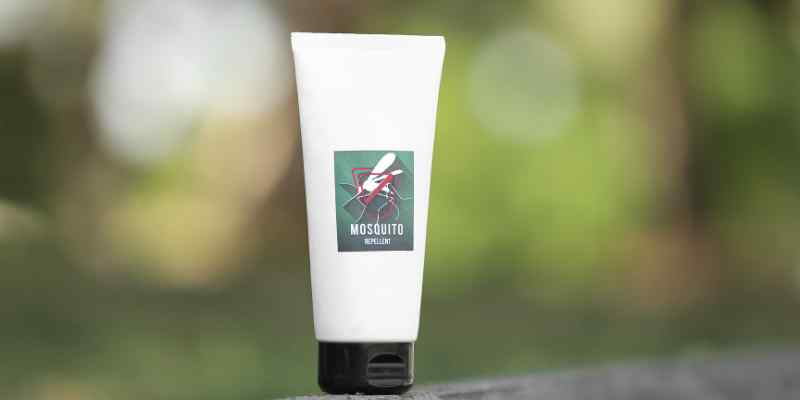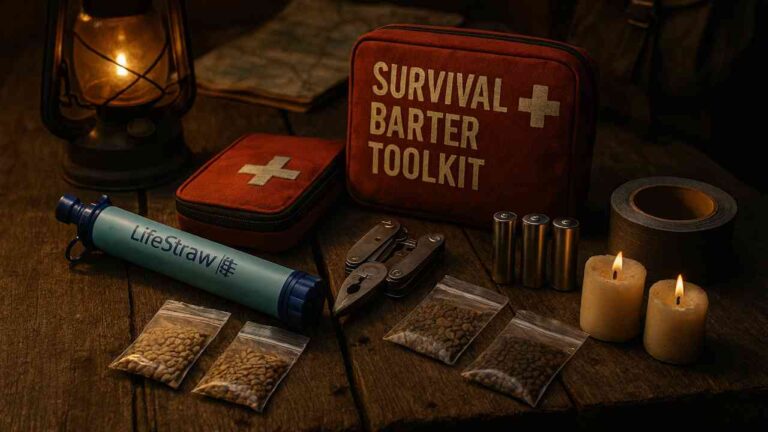Dangers of Outdoors
DIY Natural Insect Repellents for Survival: Spending time in nature is refreshing, but it comes with hidden dangers—especially from tiny insects. Shockingly, mosquitoes alone cause over 700,000 deaths each year worldwide by spreading deadly diseases like malaria, dengue, and Zika virus. In the U.S., the threat isn’t as extreme, but it’s still real.
Mosquitoes and ticks can carry West Nile virus, Lyme disease, and Rocky Mountain spotted fever, which can lead to serious illness if untreated. With rising health concerns and a push for eco-safe living, more people are turning to natural, chemical-free insect repellents.
These DIY options not only protect your skin but are also safe for the environment—making them a smart choice for campers, hikers, and survivalists who want to stay bite-free naturally.
Need for Natural Repellents
Traditional insect repellents often contain chemicals like DEET, which, while effective, can cause skin irritation and environmental concerns. In contrast, DIY natural insect repellents for survival offer a safer, eco-friendly alternative. They utilize plant-based ingredients known for their insect-repelling properties, providing protection without harmful side effects.
Essential Oils: Nature’s Defense Mechanism
Essential oils are concentrated plant extracts that have been used for centuries to deter insects. Their strong scents and chemical compositions make them effective natural repellents.
Top Essential Oils for Insect Repellency
| Essential Oil | Target Insects | Duration of Effectiveness |
| Lemon Eucalyptus | Mosquitoes, Ticks | Up to 6 hours |
| Lavender | Mosquitoes, Moths | 2–3 hours |
| Peppermint | Mosquitoes, Ants | 2–3 hours |
| Citronella | Mosquitoes | 2 hours |
| Tea Tree | Mosquitoes, Lice | 2–3 hours |
Top 5 DIY Natural Insect Repellent Recipes
Making your own insect repellents at home isn’t just easy — it’s safer, customizable, and cost-effective. Whether you’re hiking through thick woods or just enjoying an evening in your backyard, these recipes will help keep pests away using natural ingredients that are gentle on your skin and the environment.

1. Lemon Eucalyptus Spray
Why it works:
Lemon eucalyptus oil contains PMD (para-menthane-3,8-diol) — a compound proven to repel mosquitoes effectively, according to the CDC. It’s one of the few plant-based oils officially recognized for its effectiveness.
Ingredients:
| Ingredient | Quantity |
| Lemon eucalyptus essential oil | 10 drops |
| Witch hazel | 2 tablespoons |
| Distilled water | 2 tablespoons |
Instructions:
- Step 1: Take a small, clean spray bottle (2 oz size works well).
- Step 2: Add 10 drops of lemon eucalyptus oil into the bottle.
- Step 3: Pour in the witch hazel — this helps the oil mix well with the water.
- Step 4: Add distilled water to top it off.
- Step 5: Shake thoroughly before each use.
- Step 6: Spray generously on exposed skin, clothing, and even your backpack.
“Lemon eucalyptus oil is a natural warrior against bugs. Safe and strong — the perfect outdoor companion.” – Survivalist Expert, Rick Morales
Pro Tip: Avoid spraying near the eyes. Reapply every 2 hours for best results.

2. Lavender and Vanilla Mist
Why it works:
Lavender oil has natural insect-repelling properties, and the scent of vanilla enhances its staying power. Together, they form a gentle yet strong barrier against mosquitoes, flies, and even moths.
Ingredients:
| Ingredient | Quantity |
| Lavender essential oil | 10 drops |
| Pure vanilla extract | 1 tablespoon |
| Distilled water | 2 tablespoons |
Instructions:
- Step 1: Add 10 drops of lavender oil to a spray bottle.
- Step 2: Measure and pour in 1 tablespoon of vanilla extract (not imitation).
- Step 3: Add 2 tablespoons of distilled water.
- Step 4: Shake the bottle well before each use.
- Step 5: Spray on your arms, ankles, and around living areas.
Where to use it: This mist is perfect for bedrooms, campsites, or kids’ tents. It smells great and provides calm as well as protection.
“Lavender doesn’t just soothe—it shields. Nature’s way to keep bugs at bay.” – Holistic Health Coach, Marla Jensen
Helpful Note: Store in a cool place. Reapply after 3 hours or if sweating heavily.

3. Peppermint and Tea Tree Blend
Why it works:
Peppermint oil gives off a sharp scent that confuses insects, while tea tree oil offers antibacterial and antifungal benefits. When combined, they do more than repel—they protect your skin from bites and irritation.
Ingredients:
| Ingredient | Quantity |
| Peppermint oil | 5 drops |
| Tea tree oil | 5 drops |
| Coconut or olive oil (carrier oil) | 2 tablespoons |
Instructions:
- Step 1: Choose your base oil — coconut is great for warm climates, olive for cooler ones.
- Step 2: Add both essential oils into a small container (preferably glass).
- Step 3: Mix well using a clean spoon or stir stick.
- Step 4: Apply a small amount to pulse points like wrists, behind ears, and ankles.
“This combo does double duty: it repels and heals. A natural defender for sensitive skin.” – Herbalist, Tina Reynolds
Important Tip: Do a patch test first if you have sensitive skin. Reapply every 4–5 hours.

4. Citronella Candle
Why it works:
Citronella is widely used in commercial repellents for good reason. When burned as a candle, it releases compounds that mask the scents humans give off, making it harder for mosquitoes to find you.
Ingredients:
| Ingredient | Quantity |
| Citronella essential oil | 10 drops |
| Soy wax | Enough to fill your container |
| Candle wick | 1 wick per candle |
| Heat-safe jar | 1 (glass or metal) |
Instructions:
- Step 1: Melt soy wax in a double boiler or microwave-safe bowl.
- Step 2: Once melted, mix in 10 drops of citronella oil.
- Step 3: Place your wick in the center of the jar (use glue or a metal base to hold it in place).
- Step 4: Slowly pour the wax into the container, holding the wick upright.
- Step 5: Let it cool and harden completely — usually 3–4 hours.
- Step 6: Light the candle outdoors or near entrances in the evening.
“Citronella candles are a campsite classic—clean burn, strong shield.” – Outdoor Blogger, Leo Grant
Safety Reminder: Always burn candles in a ventilated area. Never leave unattended.

5. Herbal Sachets
Why it works:
Some dried herbs are known to naturally repel insects through their scent. Lavender, rosemary, and mint are especially strong. These sachets are ideal for tents, sleeping bags, drawers, or even inside shoes during hiking.
Ingredients:
| Ingredient | Quantity |
| Dried lavender | 1 tablespoon |
| Dried rosemary | 1 tablespoon |
| Dried mint | 1 tablespoon |
| Small muslin or fabric bags | As needed |
Instructions:
- Step 1: Mix all dried herbs in a clean bowl.
- Step 2: Spoon the mixture into your small fabric bags.
- Step 3: Tie securely.
- Step 4: Place sachets in desired spots: your tent, backpack, under pillows, or hanging by the door.
Bonus Use: You can toss one into your sleeping bag to create a bug-repelling barrier while you sleep.
“Dry herbs don’t just smell amazing—they work silently to keep your space pest-free.” – Camping Essentials Writer, Dana Lively
Storage Tip: Replace herbs every 4 weeks to keep the scent strong and the bugs far away.
Application Tips for Maximum Protection
- Reapply Regularly: Because Natural InsectRepellentsrely on natural oils, they tend to evaporate faster than store-bought sprays. For consistent protection, reapply every 2 to 3 hours—especially during active outdoor movement or sweating.
- Test for Allergies: Before applying any DIY blend to large areas of skin, always do a patch test. This ensures your skin won’t react poorly to essential oils used in DIY Natural Insect Repellents for Survival, which can be strong even in small doses.
- Avoid Sensitive Areas: Do not apply your Insect Repellents near the eyes, mouth, or any cuts or wounds. Essential oils can cause irritation or burning when used on delicate or broken skin, even when diluted.
Safety Precautions and Considerations
- Dilution is Key: Essential oils must be diluted using water or a carrier oil such as coconut or olive oil. Undiluted oils in DIY Natural Insect Repellents for Survival can cause skin irritation, redness, or even chemical burns if applied directly.
- Storage: Store all your Repellentsin cool, dark locations like cupboards or shaded bags. Heat and sunlight can break down essential oils, reducing their effectiveness and shortening their shelf life significantly.
- Child Safety: Be cautious when using essential oils around young children. Some ingredients in Natural Insect Repellents—like peppermint or eucalyptus—aren’t recommended for kids under 3 years of age due to sensitivity and possible reactions.
Comparing Natural and Chemical Repellents
| Feature | Natural Repellents | Chemical Repellents |
| Ingredients | Plant-based | Synthetic chemicals |
| Skin Sensitivity | Lower risk | Higher risk |
| Environmental Impact | Eco-friendly | Potentially harmful |
| Duration | Shorter (2–6 hours) | Longer (up to 12 hours) |
Incorporating Repellent Plants
Certain plants naturally deter insects. Planting them around your home or campsite can provide passive protection.
Effective Repellent Plants
- Marigolds: Marigolds release a strong scent that naturally repels mosquitoes and aphids. Planting them near entrances or sitting areas creates a protective insect barrier around your space.
- Basil: Basil doesn’t just add flavor to meals—it also gives off a sharp aroma that keeps flies and mosquitoes away. Keep potted basil near windows or picnic areas.
- Lemongrass: Lemongrass is rich in citronella oil, a proven mosquito repellent. Growing lemongrass around your yard or campsite discourages bugs from coming too close.
- Lavender: Lavender’s calming fragrance masks human scent and deters moths, fleas, and mosquitoes. Plant it along paths or borders to create a naturally bug-resistant environment.
Understanding Insect Behavior
Insects are attracted to certain cues:
- Carbon Dioxide: Insects use carbon dioxide from your breath to locate you. By avoiding heavy breathing or gathering in large groups, you reduce this powerful insect attractant.
- Body Odor: Sweat, perfumes, and scented lotions release odors that insects love. Avoid using fragrant products outdoors and shower after physical activity to reduce insect interest.
- Heat and Movement: Mosquitoes and ticks detect warmth and motion to find their next meal. Stay cool, limit sudden movements, and wear light-colored clothing to stay less visible.
By understanding these behaviors, you can take steps to minimize attraction, such as staying cool and avoiding scented products.
Natural Repellents for Pets
Pets can also benefit from natural insect repellents.
- Essential Oil Sprays: Diluted essential oil sprays like lavender or cedarwood can safely repel fleas and ticks on pets, but always patch-test and avoid sensitive areas like eyes.
- Herbal Collars: Herbal collars are infused with pet-safe herbs like rosemary and peppermint. They offer continuous, passive protection without harsh chemicals—great for everyday use.
- Regular Grooming: Brushing and bathing your pet removes dirt, pests, and eggs. Grooming regularly helps you spot early signs of infestation and keeps your pet’s skin healthy.
- Veterinarian Advice is Essential: Before using any DIY natural insect repellents for survival on pets, consult your vet. Some essential oils can be toxic, especially for cats and smaller breeds.
Note: Always consult a veterinarian before applying any repellent to your pet.
Storing and Preserving Your DIY Repellents
- Use Dark Glass Bottles: Always store your DIY natural insect repellents for survival in amber or cobalt glass bottles. These block sunlight, which helps preserve the repellent’s strength and stability.
- Label Clearly: Include the creation date and list of ingredients on every bottle. This helps you track potency and avoid using expired or irritating combinations by mistake.
- Refrigerate: Keep your homemade repellents in the refrigerator. The cool temperature slows down oxidation, which extends the shelf life and preserves the essential oils’ effectiveness.
Final Thoughts
Choosing DIY natural insect repellents for survival is a smart, practical step toward safer outdoor living. These homemade solutions offer real protection without exposing your skin—or your loved ones—to harmful chemicals. By understanding insect behavior, using proven essential oil recipes, and even planting natural repellents, you take control of your environment.
Whether you’re camping, hiking, or protecting your backyard, nature offers powerful tools to keep bugs away. Just remember—proper storage, regular application, and safety testing are key to getting the best results. At BuySmart, we believe in expert, informed decisions. That’s why we guide you through natural, effective solutions that work when you need them most—in the wild and at home.
Frequently Asked Ques
A lemon eucalyptus spray made with essential oils, witch hazel, and water is highly effective for repelling mosquitoes and other insects.
You can apply a peppermint and tea tree oil blend mixed with a carrier oil like coconut oil. It naturally repels mosquitoes and other bugs.
Citronella is one of the most effective natural insect repellents. It can be used in sprays, candles, or even as an essential oil.
Lemon eucalyptus, lavender, and citronella are powerful scents that bugs generally avoid, making them great for DIY repellents.
Taking vitamin B1 (thiamine) or garlic supplements may help repel mosquitoes by changing the scent of your skin.
Yes, cinnamon has natural insect-repelling properties. It works well against mosquitoes and ants when used as an oil or sprinkled in areas of infestation.







